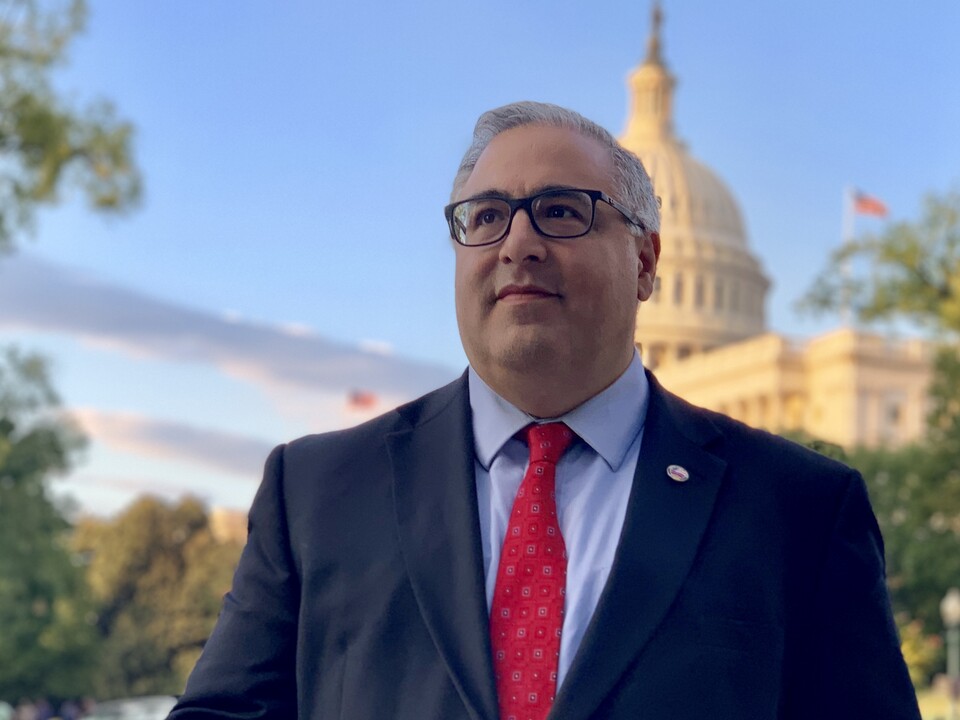Armenians Voice Clear Priorities for Military Reform
8-minute read
“We should have had this concept two years ago,” states military analyst Leonid Nersisyan, reflecting on Armenia’s belated military transformation efforts. His assessment echoes the sentiment of most Armenians according to the latest Armagora poll, which reveals a society grappling with the military realities exposed by the 2020 conflict.
The poll, conducted by Armagora.am through The Future Armenian Foundation, sheds light on Armenian attitudes toward military reform, showing clear consensus on key priorities while highlighting divisions on more contentious issues like gender roles in the armed forces.
Leadership Reform Takes Center Stage
The most striking finding concerns what Armenians believe should be the military’s top priority. Nearly half of respondents (47.31%) identified “improving the effectiveness of military leadership and organizational management” as the most urgent need – significantly outranking even weapons acquisition (35.30%).
This focus on leadership reform strongly aligns with expert assessment. “Management and administration are perhaps the most important factors and the most difficult to change,” notes Nersisyan, adding that “our defeat in the 2020 war, I would say, is more related to this problem than to weapons and ammunition, which were not so few in the Armenian and Defense armies… We were quite poor at using our resources.”
The poll reflects a growing recognition that Armenia’s military challenges stem not from lack of resources alone, but from structural and leadership deficiencies that prevented effective resource utilization during the conflict.
Broad Support for Military Transformation
When asked about the Armenian Ministry of Defense’s “Army Transformation Concept,” 52.87% of respondents expressed support for this comprehensive reassessment of approaches to the Armed Forces, with 23.66% opposing and 23.48% unsure.
Nersisyan offers context for this mixed response: “We can discuss whether everything has been included in the concept, whether everything is correct or not, but globally, I would say we should have had this concept two years ago.” This sentiment suggests that while the concept itself has majority support, frustration exists regarding its delayed implementation.
The military analyst particularly highlights weapons acquisition as an area where Armenia has fallen dangerously behind. “With our mass purchases that we have now started, we are almost 10 years late on this issue,” he observes. “In 2009, at least, the situation was quite obvious where it was starting to move, and we should try not to make such mistakes in such strategic issues.”
Society Unprepared for Future Conflict
A concerning finding emerges regarding societal readiness for potential future conflict. A plurality (39.07%) believe Armenian society is “completely unprepared” for a new conflict, with an additional 22.94% considering it “somewhat unprepared.” Only 4.30% view society as “fully prepared.”
“I would probably say here that we are not prepared; it cannot be said that no part is,” Nersisyan acknowledges. “There are groups of people in our society who are very well prepared and working, but I think there is a lot of work to be done here.”
This perceived unpreparedness extends beyond the military itself to broader societal readiness – a critical factor in modern conflicts where civilian resilience and rapid mobilization capabilities can prove decisive.
The Role of Women in Armenia’s Military
One of the more divisive questions concerned female participation in the armed forces. The largest group (32.97%) supported voluntary service for women, but limited to support roles. Nearly a quarter (23.84%) opposed any female enlistment, while 18.28% supported voluntary frontline service. Smaller percentages supported mandatory service in various capacities.
Nersisyan offers a pragmatic assessment of this issue: “I think Armenia is not yet ready for us to have a large number of women on the frontlines, and it’s also connected with certain problems. For example, for women to be captured by the enemy becomes a very big problem.”
However, he sees significant value in expanding women’s roles in specific areas: “If we talk about other roles, there can be great benefit because women in those roles, for example related to communications, intelligence, and many other types of roles can be very useful, and the issue of manpower in the Armenian Armed Forces can be solved to some extent.”
Public Participation in Military Development
When asked how society should contribute to military development, respondents highlighted several approaches with relatively close levels of support. Establishing or joining rapid response units for emergencies led at 31.00%, followed by creating mechanisms for public dialogue on military reforms (28.49%), community preparedness training (15.95%), and direct enlistment (14.52%).
Interestingly, Nersisyan challenges this prioritization: “I would probably put that last place [direct enlistment] in first place, because first of all, it’s the army that fights in a war, and if there aren’t enough soldiers in the army, that’s a big problem, and we’ve seen that problem.”
This discrepancy between expert and public opinion suggests that Armenians may be overestimating the value of auxiliary contributions relative to actual military service – a perception gap that could hinder effective force generation.
Diaspora Support: A Multifaceted Approach
The poll revealed remarkably balanced views on how the Armenian Diaspora should support Armenia during wartime. Providing weapons and equipment (17.46%), amplifying lobbying efforts (17.04%), financial assistance (16.30%), and raising international awareness (15.77%) all received similar levels of support, with technology provision (13.02%), direct enlistment (10.26%), and intelligence sharing (6.77%) trailing.
“I think it clearly shows that we should not just see one of these factors,” Nersisyan observes. “All are equally important, but I also want to note that it is very important to be able to plan and prepare for it and have working pipelines with the state for all this.”
He highlights the logistical challenges encountered during the previous conflict: “Otherwise we will have the same picture when aid comes to Armenia and ends up in some warehouse, because there are no resources to understand who sent what, nor did the people who sent it know what needed to be sent, money could be spent on quite a few things unnecessarily.”
This emphasis on preparation and coordination suggests that the effectiveness of diaspora support depends not only on willingness to contribute, which is clearly present, but on organizational structures that must be developed before conflict erupts.
A Path Forward: Integration and Preparation
Taken together, these findings paint a picture of a society that recognizes the need for fundamental military reform while struggling with questions of implementation. The strong emphasis on leadership and management improvements indicates awareness that technological and numerical advantages cannot compensate for organizational deficiencies.
As Armenia works to rebuild and reform its armed forces, these poll results suggest several priorities:
- Focus first on structural reforms to military leadership and resource management
- Develop concrete pre-crisis coordination mechanisms with diaspora organizations
- Expand societal preparedness through training and education
- Create meaningful participation channels for those not serving directly in the military
- Take a balanced approach to modernization that addresses both technology gaps and organizational weaknesses
For policymakers, the challenge lies not only in addressing these priorities, but in managing expectations during a necessarily lengthy transformation process. As Nersisyan notes regarding territorial defense forces: “We need to be able to bring it to life as quickly as possible” – a sentiment that applies broadly to Armenia’s military reform efforts.
The path to military transformation will require not only technical and organizational changes, but a cultural shift in how Armenian society engages with defense questions. This poll suggests that while consensus exists on broad direction, significant work remains in aligning public and expert understanding of specific priorities to create a truly resilient security architecture.
Photo: www.army.mil




